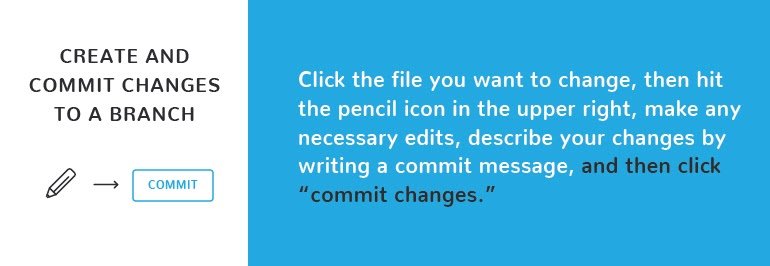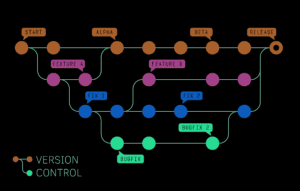Writing code can be complex, but it’s a lot easier with the right support and tools. In order to become an elite programmer, you need version control support and also the support of others who code. Whether they are members of your team, or are just generally familiar with the type of problem you are trying to solve, finding helpful individuals who can give you guidance and help you elevate your work is essential in the world of programming.
GitHub brings together teams and coding experts onto one collaborative platform where they can share ideas and methods and make awesome software together. But just what is GitHub, what is GitHub for, how does it work, and what makes it so beneficial? This brief GitHub tutorial will help you get started as you learn how to use GitHub.
What is GitHub?
GitHub is one of the world’s largest communities of developers. It’s an intricate platform that fosters collaboration and communication between developers. GitHub has a number of useful features that enable development teams to work together on the same project and easily create new versions of software without disrupting the current versions, but it doesn’t stop there.
Once new additions to a program are complete, for example, they can easily be incorporated into existing programs. GitHub also makes it extremely simple to work together on strings of code to really dial in and perfect even the smallest parts of a program. With GitHub, you can collaborate and work on projects with others anywhere in the world.
Of course, that’s only scratching the surface, because when it comes to the question “What is GitHub?” the answer is all about what it can do for you.
What are the Benefits of GitHub?
Why use GitHub? There are a number of reasons.. The first is that it enables slick and easy collaboration and version control. This allows you to work on code with anyone from anywhere. Additionally, many employers use GitHub. So, if you plan on getting a job, you’ll look really good if you already know your way around GitHub. And don’t forget about the connections, learning, and portfolio aspects. GitHub is a robust learning and collaboration platform. Take time to explore it and see just how much it can expand your programming knowledge.
How do I Use a GitHub?
GitHub is complex, but understanding a few basics will help you get started. In order to use GitHub, you’ll need to first be able to complete these few steps. How to use GitHub:
1. Sign up for GitHub
In order to use GitHub, you’ll need a GitHub account. You can create a free GitHub account here and start using GitHub right away. With a free account, you’ll get access to unlimited public and private repositories. You’ll also get bug tracking and project management features. The only downside is that you’ll only be allowed three collaborators for private repositories. If you’re still in the “GitHub for beginners” stage, signing up for a free account is a great place to start.

2. Install Git
GitHub runs on Git. What is Git? Git is a version-control system created by programming icon, Linus Torvald. He originally created Git to track changes to source code changes as he was developing the Linux operating system. (Read: 10 Top Git Commands and How to Use Them.) Git helps programmers collaborate, coordinate work, and work together on complex code and development projects. Git tracks changes and helps teams work remotely on intricate programs. Click here to install Git on your computer. Some prefer to make changes using the command line in Git itself. For our purposes, though, we’ll focus on how to do things within GitHub.
3. Create a Repository

To do anything in GitHub, you’ll need to know how to first start a repository. A repository (or repo) is essentially synonymous with the word “project.” Quite simply, a repository stores everything pertinent to a specific project including files, images, spreadsheets, data sets, and videos, often sorted into files. It’s best to include a README file within your repository that has specific information regarding the given project. On GitHub, you can add a README file right when you create a new repository.
To create a new repository, you’ll hit “new repository” in the upper-right-hand corner. You can then name your repository, include a brief description, and check the box that says “initialize this repository with a README.” Finally, you’ll click “create repository.”
4. Create a Branch
Projects are multi-faceted and many program versions are required when you’re building. Branching enables you to edit multiple unique versions of a repository at once. Your repository automatically has a definitive branch called master. You can work on several different branches in order to make edits before eventually committing them to the master branch.
When a new branch is started, it’ll be a copy of the master branch until you edit it to make new changes. A branch typically goes through many steps and approvals before it is ever merged into the master branch. To start a new branch in GitHub, navigate to your new repository, click the dropdown that reads “branch: master,” type a branch name (like README-edits), and then hit “create branch.” Branches are ideal for new features or bug fixes.
5. Create and Commit Changes to a Branch

To make changes to a branch in GitHub, go to the code view for your newly created branch. Click the file you want to change, then hit the pencil icon in the upper right, make any necessary edits, describe your changes by writing a commit message, and then click “commit changes.” Each saved change is called a commit. Every individual commit has its own commit message which gives more details into why a specific change was done. The commit messages give a history of changes and help project contributors understand how the project has changed over time.
6. Open a Pull Request
In order for any branch to be merged into another person’s branch, you must open a pull request. A pull request is GitHub’s way of notifying relevant parties about your request to incorporate changes into their branch. A pull request will show in red and green the differences of the content between branches. You can make a pull request any time you complete a commit. For best results, when sending a pull request, you can use the “@” feature to mention specific people from whom you need feedback.
To open a pull request, you’ll go to the “pull request” tab and hit the button that says “new pull request.” Next, in the “example comparisons” box, find the branch you made and compare it with the master. Ensure you like the changes and then click the “create pull request” button. Title your pull request and briefly describe the changes. To finish, click “create pull request.”
7. Merge Your Pull Request
Merging your pull request with the master branch is something you may need to pass on to your superiors to handle. For the sake of learning, though, you can practice doing it yourself. Simply hit the button that says “merge pull request,” select “confirm merge,” and then delete the branch you merged once it has been incorporated into the master.
More About GitHub: The Open Source Community
There’s a lot to explore in GitHub. We’ve only scratched the surface so far, but we hope that brief GitHub tutorial was beneficial. You’ll quickly come to learn that GitHub is much more than just a version-control platform. You’ll find it’s almost a type of social media platform for programmers. The GitHub open source community gives you access to millions of open source projects. There you can get involved with a project or start one of your very own. Working on open source software is an awesome way to learn new skills and collaborate with bright programmers from whom you can learn a lot.
Promoting Your GitHub Profile
GitHub is a great place to not only expand your programming knowledge, but also showcase your best work. Your GitHub Profile is a great place for recruiters to find you and reach out about potential jobs and projects. Many people strive to gain GitHub followers by writing engaging and helpful blog posts, or even by creating podcasts or YouTube GitHub tutorials. The more followers you have, the more opportunities will be open to you, and the greater ability you’ll have to become a thought leader in the programming space.
Learning and Growing With GitHub
The best programmers are always learning. The world of computer programming is constantly evolving and new problems are being solved with code every day. In order to stay sharp, you need to be consistently discovering new ways to tackle problems. You need to be trying new things and collaborating with other programmers. The coding community is a tight-knit one, but it’s also large. There are so many people to learn from. GitHub has a wealth of features that enable you to collaborate with and learn from the best in the industry. Take some time to explore GitHub and discover how you can unlock your full potential and become an expert programmer.









